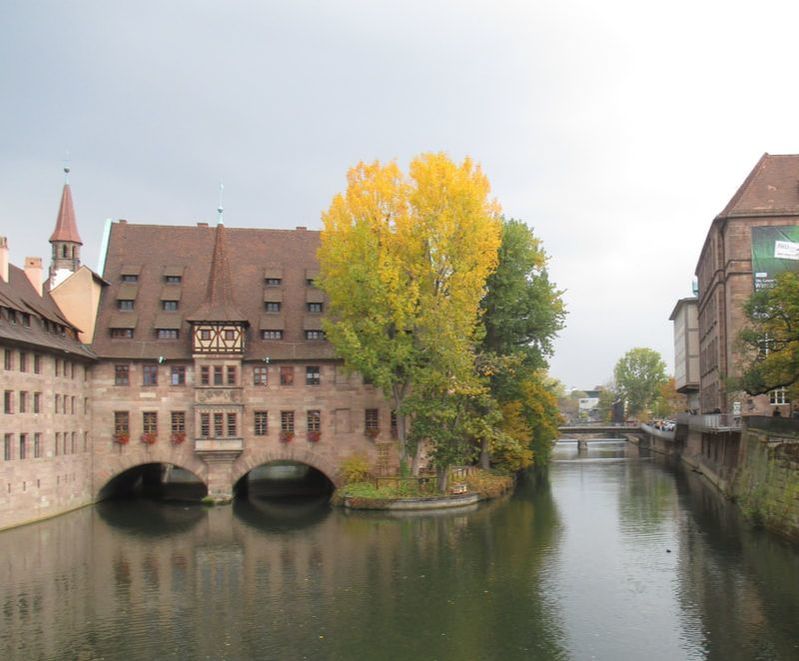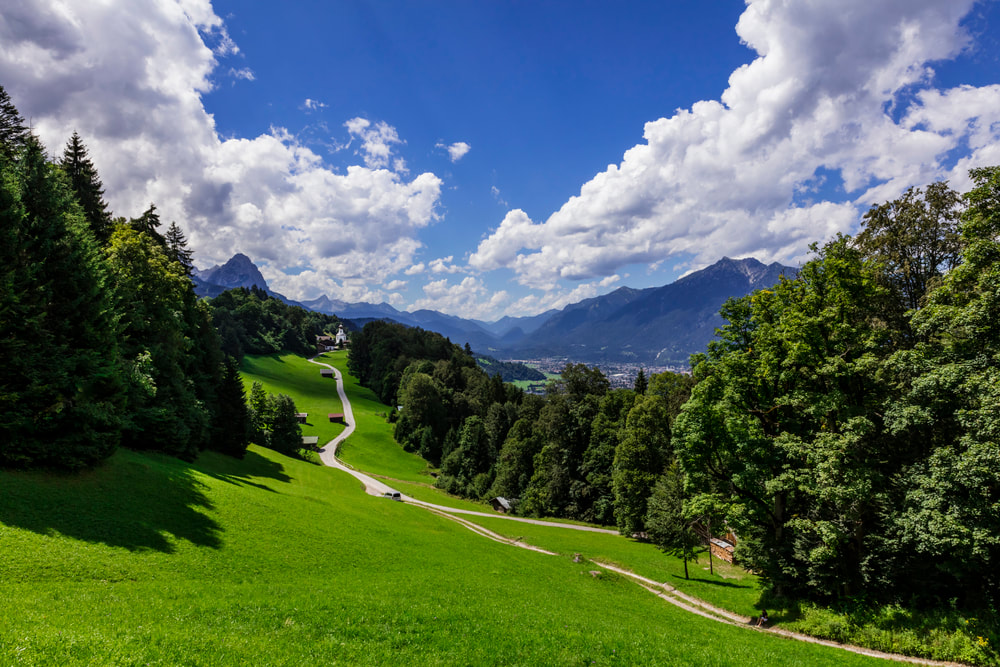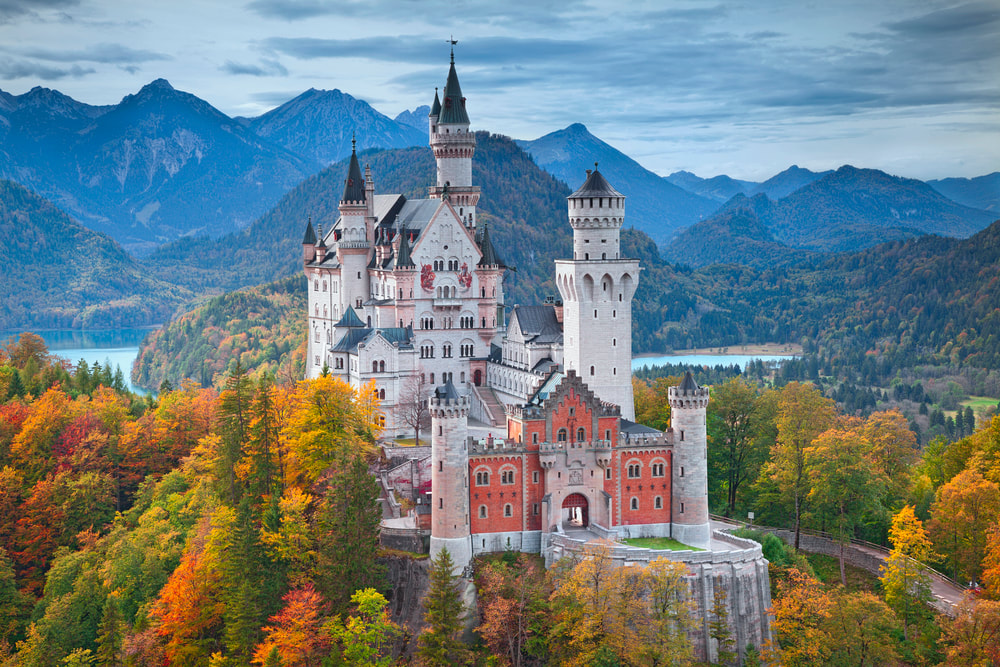|
8/20/2020 Unforgettable BavariaBavaria, Germany's largest state, is home to spectacular events, great cities, fairy tale castles, two national parks and 8 UNESCO world heritage sites. And that's just the beginning. Bavaria is a breath-taking region, and a perfect journey to add before or after a Danube river cruise. Take a look at a few of Bavaria's highlights along with several tour ideas. Bayreuth Your journey begins in the Northern Bavarian region of Franconia, in Bayreuth, the beautiful city of music. Start at the Wagner Museum, which documents the career of composer Richard Wagner. Another fascinating place to stop at is the Steingraeber & Söhne Piano Manufactory and piano shop, which opened in Bayreuth in 1852 and is still family run. The shop exports pianos all over the world. Despite that, you will not want to miss St. Georgen, a remarkable suburb of Bayreuth. This town impresses with an authentic 18th century townscape situated alongside a cobblestone main street, and the magnificent Ordenskirche. While in St. Georgen, you should also explore its extensive system of cellars and tunnels, hundreds of years old and miles long. A memorable town, indeed! Nuremberg Still in Franconia, continue on to Nuremberg, Bavaria’s second-largest city. The first suggestion is the Memorium of the Nuremberg Trials. The permanent exhibition is located in the Palace of Justice and focuses on both the background and the aftermath of the trials. After this, you might want to discover something lighter, so continue to the unique Altstadthof Brewery, where you can find local culinary specialties, along with traditional Nuremberg Red Beer. You will enjoy each sip, guaranteed! From here, continue to the suburb of Fürth. No Bavarian city boasts more historic buildings in proportion to its inhabitants – more than 2,000 in a town of about 120,000 residents. You will enjoy this place like a local. Munich Next stop: Munich, Bavaria’s capital and Germany’s third largest city. The MUCA (Museum of Urban Contemporary Art) is Munich’s “hot spot” for urban and contemporary art lovers. It offers a high-profile exhibitions program featuring “off the beaten path” art and unique artists. A shopping hint - Kustermann. This is an amazing store offering an exceptional variety of cookware, dining accessories, and crystal; its inventory includes more than 70,000 items that will blow your mind. There is also a cooking school for Bavarian specialties. A nearby suburb that is well worth a visit is Westend. Once an “up and coming” part of town, Westend has now arrived as a thriving and “cool” artist community with great bars and restaurants. If you’re looking for an unconventional place to eat breakfast, head to Parkstrasse 2 where you’ll find a shop-plus-café housed in a recently restored textile warehouse. While in Munich, another great experience is the BMW Welt, an amazing architectural marvel. It is home to the individual BMW Group Brands – BMW, the sub-brands BMWM and BMW I, Mini, Rolls-Royce Motor Cars and BMW Motorrad (Motorbikes). The exhibitions of both classic cars and new vehicles will dazzle you. However, it is recommended to go to the restaurant run by the famous chef Bobby Bräuer, The EssZimmer, located on the third floor of BMW Welt. It is one of Munich’s most fashionable gourmet addresses, and offers an experience that appeals to all of your senses. The atmosphere in the restaurant is as cozy as it is luxurious, with an open fire, fine timbers, dark leather and warm colors. Guests feel at home here the moment they walk through the door. Garmisch-Partenkirchen In Southern Bavaria, a must-see is Garmisch-Partenkirchen, a world-class Alpine resort town. Here, Bavaria suggests paying a visit to the Werdenfels Museum, one of the most impressive folk museums in Bavaria. Spread over five floors, the museum depicts the history of the Werdenfels region and its rich culture. Feel like dressing like a local? Head to a shop for Bavarian folk attire: Trachten-und Modehaus Grasegger. This independent, traditional clothing house preserves the customary Bavarian way of shopping for clothing, and will allow you to dress to impress with Lederhosen and Dirndl. Check out the suburb of Wamberg. The picturesque mountain road to this tiny village (27 inhabitants) is truly idyllic. It literally will seem as if time stands still, as the view consists of nothing but original architecture and nature. Füssen Now, off to Füssen, also in southern Bavaria. From Füssen, it is a short ride to Neuschwanstein Castle, one of the most visited castles in the world. In town, we would suggest the museum of Füssen which offers a variety of exhibits documenting local culture, such as the history of lute and violin-making, and paintings such as the “Dance of Death,” which depicts the plague that swept in during the Middle Ages. Another hint: There is a very special and unique souvenir gallery (Galerie 5), where you can buy art at a reasonable price from a local graffiti artist named Robert Wilhelm - it would make a truly unique souvenir. If you are looking for scenic views, the town now has a new “treetop walk” on the banks of the River Lech. It is a quarter mile long, affording magnificent views. And, better still, while on the walk you will cross the border into neighboring Austria. SUGGESTED TOURING ROUTES #1 The Bavarian Alps This journey takes you along the German Alpine Road between Schonau on the Konigsee in the east to Lindau on the Bodensee (Lake Constance) in the west. This route has you experiencing rich cultural heritage, beautiful valleys and towering mountains. Highlights include Berchesgarden, the Chiemsee (be sure to see the Herrenchiemsee Palace), Garmisch-Partnekirchen, the Zugspitze (Germany's tallest peak), the Ammergau Alps, Linderhof and Neuschwanstein Palaces and Fussen, which is at end/beginning of the Romantic Road. #2 Franconian Highlights Franconia is the northern section of Bavaria. This area includes 4 UNESCO world heritage sites and is part of both the Romantic and Castle scenic routes. Nuremberg, Bavaria's second largest city, is a popular river cruise stop with its imperial castle, half-timbered houses and delicious sausages, along with WWII history. Other stops along this route include Bayreuth, home to Germany's most famous music festival as well as the UNESCO Margravial Opera House and 200 beer breweries. The Hermitage Court Gardens shouldn't be missed. Next stop - Bamburg. The entire city is a UNESCO site and is well known for their smoked beer. Wurzburg, on the Main River, is the center of the Franconian wine region and is known for its lavish baroque palace as well as the many wineries, cellars and wine bars. The fairy-tale town of Rothenburg ob der Taube (on the Romantic Road) is not to be missed. #3 Historical and Spiritual Bavaria Bavaria is well known for the Passion Play held in Oberammergau once every decade. But Bavaria has a number of historical sites for those interested in the spiritual side of the region. Altotting, about an hour outside of Munich, has been the scene of religious pilgrimages for Catholics for over 500 years. The Shrine of Our Lady, or Chapel of Grace, is the national shrine of Bavaria and dates back to 660 AD. Passau, also a popular stop on a Danube River cruise is home to the world's largest pipe organ, and if your timing is right, you can sit and listen to th emusic. Regensburg, a UNESCO site, is Germany's best preserved medieval city and home to Germany's oldest boy's choir, Germany's oldest cafe and the most famous Sausage Kitchen. Information was provided by Bavaria Tourism. GERMANY IS WAITING FOR YOU! LET ME HELP YOU DISCOVER IT. Call me at 602.540.7338 to start the discovery process or complete this simple form .
1 Comment
|
Laurie Marschall - Owner and Founder
|










 RSS Feed
RSS Feed
